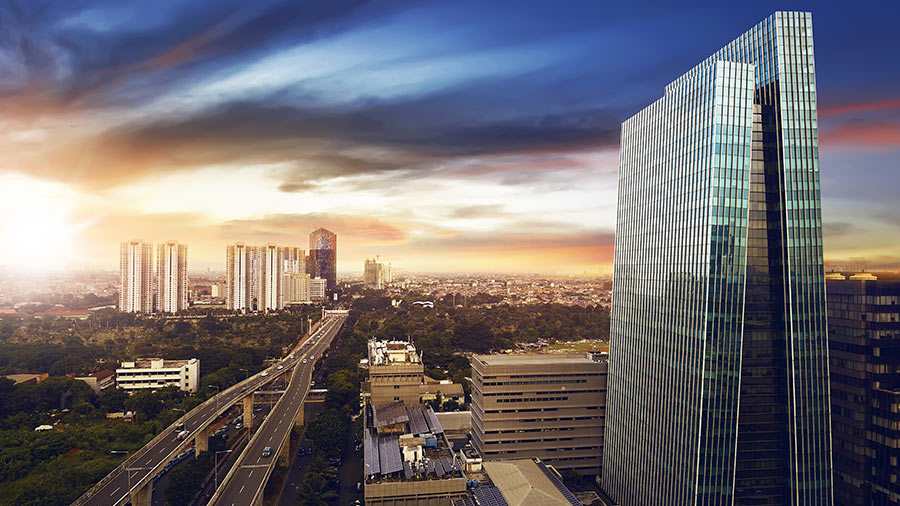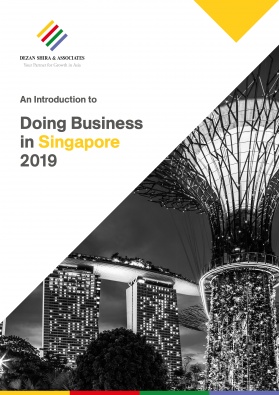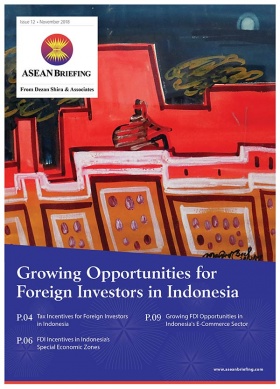Indonesia’s Investment Outlook for 2019
Indonesia in recent years has registered a steady growth at above 5 percent. Steady investment flows have also allowed Indonesia’s economy to expand at a rapid pace. Most notably, the Indonesian government has announced various policy changes, which are primarily aimed at providing new opportunities for foreign investors.
Indonesia’s economic growth is more measured due to the slowing down of global economy impacted by the US-China trade war. Thus, it will continue to depend to a large extent on domestic investment and household spending to drive its economy in 2019.
Economy
One of the sectors that manifested consistent growth is Indonesia’s creative industry.
It has an excellent growth record of 922.58 trillion IDR (US$64.7 billion) or 7.44 percent of the country’s GDP and accounted for 14.3 percent of Indonesia’s workforce.Dubbed as the ‘creative economy’ initiative under the Jokowi administration, it is poised to become Indonesia’s future economic powerhouse. The government has prepared incentives and supporting measures which involve regulatory procedures made easier for interested investors. Jokowi established the BEKRAF or Indonesia’s Creative Economy Agency to facilitate development and coordination of creative economy in Indonesia.
This body designed six major missions, namely:
- Unite all of Indonesia’s assets and creative potential to achieve an independent creative economy;
- Create a conducive climate for the development of creative industries;
- Encourage innovation in the creative field that has value-added and competitiveness in the international world;
- Open the insight and appreciation of the community on all aspects related to the creative economy;
- Building awareness and appreciation of intellectual property rights, including legal protection of copyright; and
- Design and implement specific strategies to place Indonesia on the world’s creative economy map.
Creative Economy is a concept that focuses on new ideas and human resources. The most active players in this sector are young entrepreneurs or small and medium enterprises (SMEs) but they are challenged with limited capital. According to BEKRAF and BPS data in 2017, small-scale companies are not eligible for financial loans because they are neither registered as limited liability companies nor obtained intellectual property rights.
On the other hand, BEKRAF has introduced the Investment Readiness Levels (IRL) to serve as a benchmark in assessing investment readiness, technological application and market competition.
The creative economy in Indonesia has 16 subsectors including apps and game development, architecture, interior/visual communication/product design, fashion, movies, animation/video, photography, handcrafts, culinary arts, music, publishing, advertising, performing arts, fine art, television and radio.
In 2016, BEKRAF targeted three subsectors including digital applications, film and music and directed the government to transform them into foreign direct investments (FDI).
Trade & Infrastructure
There is a current trade deficit in Indonesia where imports continue to rise against exports. The government raised import taxes on 1,140 types of goods in order to make up for the imbalance. However, according to Moody’s, Indonesia’s GDP outlook remains stable considering the steady support of private consumption and a pickup in export growth.
The depreciation of the Rupiah is said to stimulate investments since Indonesian stocks and securities are highly undervalued. The latest OECD report for November 2018 sees this exchange rate depreciation as one way of curbing imports and increasing export competitiveness. More investments in the export sector and raw material production are also needed to tackle the trade gap.
Despite lower exports amid US-China trade tensions, improvement in infrastructure regulations and connectivity are seen to deliver gains in the market share. Regulatory corrective measures associated with the Viability Gap Funding (VGF) and availability payment are geared toward attracting investment of business entities. The Indonesia Infrastructure Guarantee Fund (IIGF) was established to arrange government guarantees for public-private partnership (PPP) projects.
Investment Climate
Indonesia’s new tax holiday policy is included in the country’s latest economic package which covers the expansion of business sectors. Two sectors available for investment are added including digital economy industry, and manufacturing industry in agriculture and forestry or plantations. Under this scheme, 169 business units listed in the Indonesian Standard of Industrial Classification (KBLI), up from the previous 153 business units, are now eligible to apply for tax holiday.
Furthermore, the “mini tax holiday” scheme allows an investor to get a 50 percent corporate income tax cut for five years. A minimum investment of IDR 100 billion (US$7 million) is required to get this tax holiday.
Another tax regulation is also being eyed regarding investments in Indonesia’s growing special economic zones (SEZs).
Indonesia is currently ranked 73rd among 190 economies in the Ease of Doing Business report released by the World Bank. The Jokowi government has made considerable progress in reforming the regulatory environment for businesses such as enforcing contracts, starting a business, paying taxes and trading across borders.
Outlook for 2019
Indonesia’s growth outlook remains positive due to domestic demand, expansion of government spending and fixed investments.
However, US-China trade tensions continue to pose downside risks in terms of the volatility of the Rupiah as well as rising crude oil prices, putting more pressure on Indonesia’s current account deficit.Danareksa, a state-owned financial institution in Indonesia, expects the country’s economy to slow down by 2019 but will strongly accelerate growth to the range of 5.3 to 5.4 percent in 2020.
Indonesia’s current GDP annual growth is at 5.17 percent in the third quarter of 2018. It remains the largest economy in ASEAN.
About Us
ASEAN Briefing is produced by Dezan Shira & Associates. The firm assists foreign investors throughout Asia from offices across the world, including in Singapore, Hanoi, Ho Chi Minh City, and Jakarta. Readers may write asia@dezshira.com for more support on doing business in ASEAN.
- Previous Article Import Procedures in ASEAN
- Next Article Singapore’s Investment Outlook for 2019








